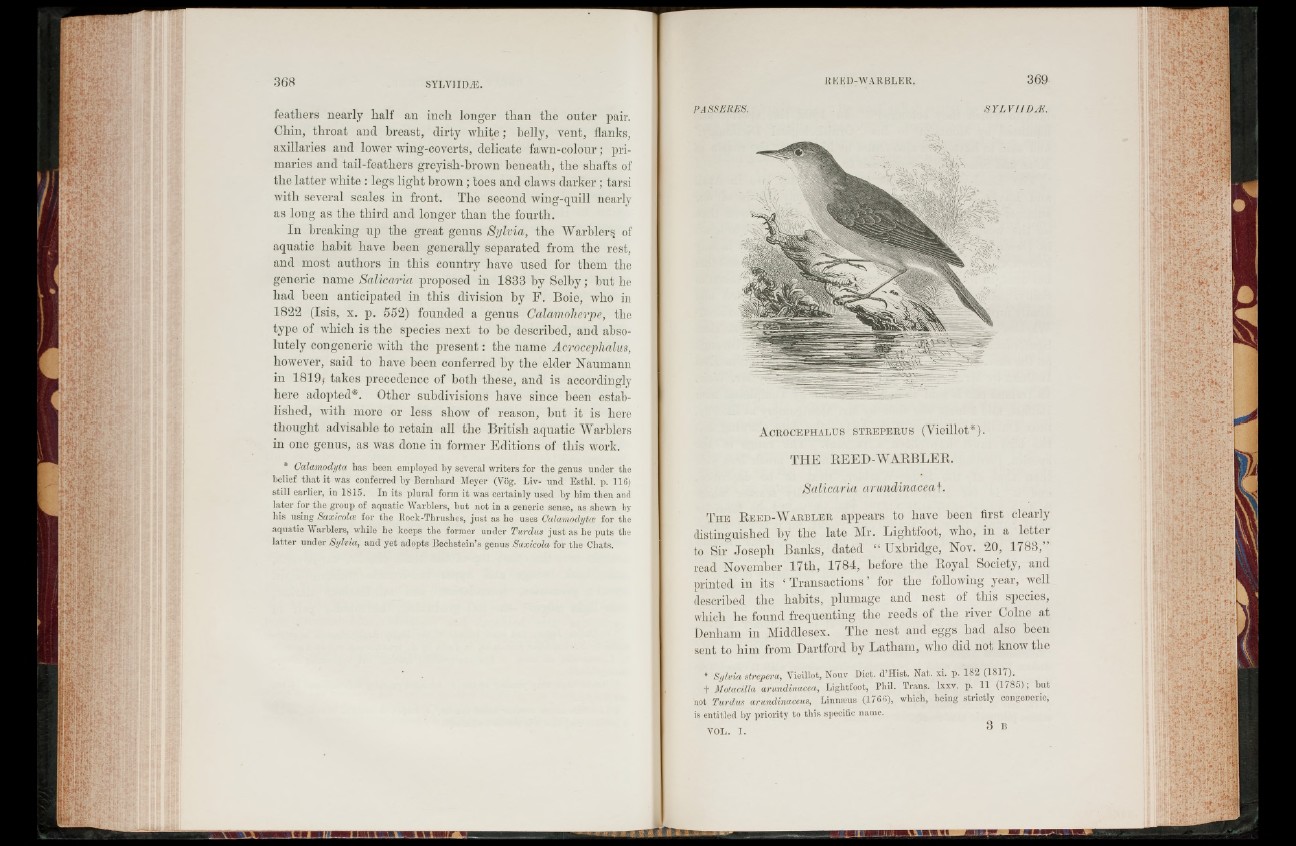
feathers nearly half an inch longer than the outer pair.
Chin, throat and breast, dirty white; belly, vent, flanks,
axillaries and lower wing-coverts, delicate fawn-colour; primaries
and tail-feathers greyish-brown beneath, the shafts of
the latter white : legs light brown ; toes and claws darker; tarsi
with several scales in front. The second wing-quill nearly
as long as the third and longer than the fourth.
In breaking up the great genus Sylvia, the Warbler^ of
aquatic habit have been generally separated from the rest,
and most authors in this country have used for them the
generic name Salicaria proposed in 1833 by Selby; but he
had been anticipated in this division by F. Boie, who in
1822 (Isis, x. p. 552) founded a genus Calamolierpe, the
type of which is the species next to be described, and absolutely
congeneric with the present: the name Acroceplialus,
however, said to have been conferred by the elder Naumann
in 1819* takes precedence of both these, and is accordingly
here adopted*. Other subdivisions have since been established,
with more or less show of reason, but it is here
thought advisable to retain all the British aquatic Warblers
in one genus, as was done in former Editions of this work.
* Calamodyta has been employed by several writers for the genus under the
belief that it was conferred by Bernhard Meyer (Viig. Liv- und Esthl. p. 116)
still earlier, in 1815. In its plural form it was certainly used by him then and
later for the group of aquatic Warblers, but not in a generic sense, as shewn by
his using Saxicolce for the Rock-Thrushes, just as he uses Calamodytw for the
aquatic Warblers, while he keeps the former under Turdus just as he puts the
latter under Sylvia, and yet adopts Bechstein’s genus Saxicola for the Chats.
A c r o c e p h a l u s s t r e p e r u s (Vieillot*).
THE IlEED-WARBLER.
Salicaria arunclinacea t.
T h e R e e d -W a b b l e r appears to have been first clearly
distinguished by the late Mr. Lightfoot, who, in a lettei
to Sir Joseph Banks, dated “ Uxbridge, Nov. 20, 1783,”
read November 17tli, 1781, before the Royal Society, and
printed in its ‘ Transactions ’ for the following year, well
described the habits, plumage and nest of this species,
which he found frequenting the reeds of the river Colne at
Denham in Middlesex. The nest and eggs had also been
sent to him from Hartford by Latham, who did not know the
* Sylvia strepera, Vieillot, Nouv Diet. d’Hist. Nat. xi. p. 182 (1817).
f Molacilla arundinacea, Lightfoot, Phil. Trans, lxxv. p. 11 (1 /8 5 ), but
not Turdus arundinaceus, Linnaeus (1766), which, being strictly congeneric,
is entitled by priority to this specific name.